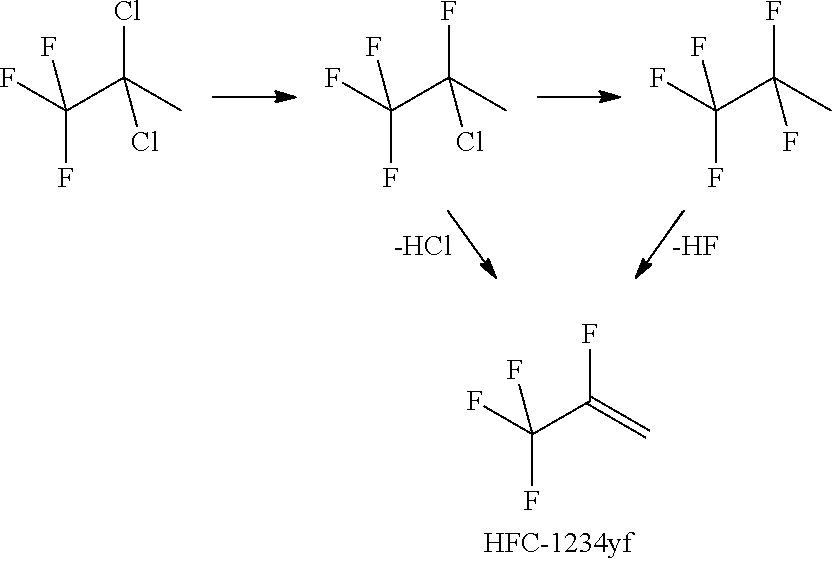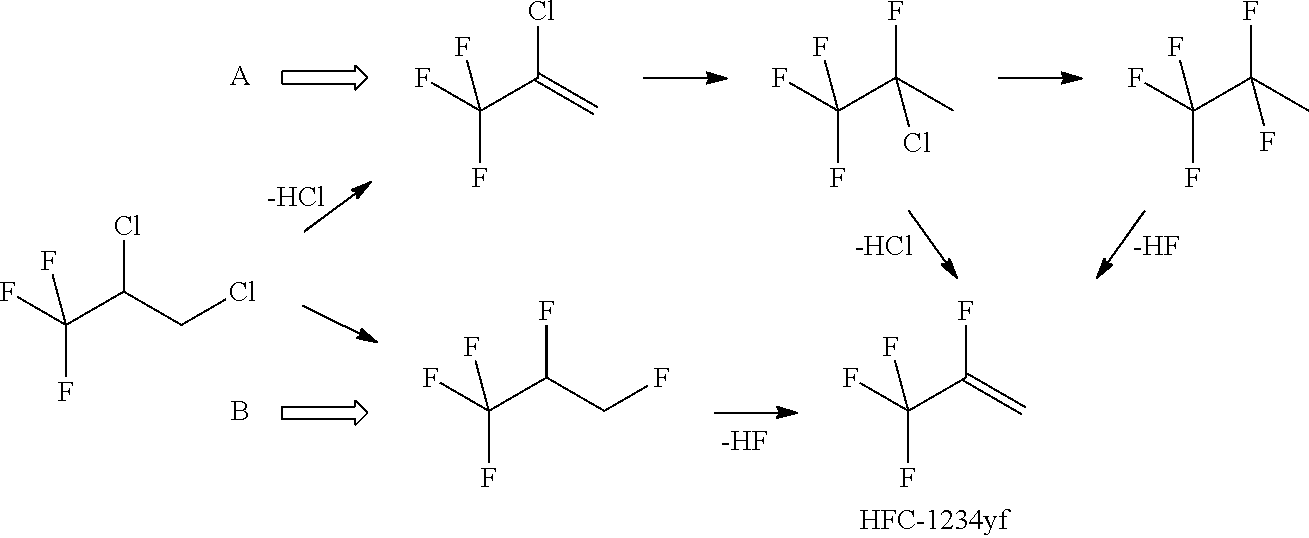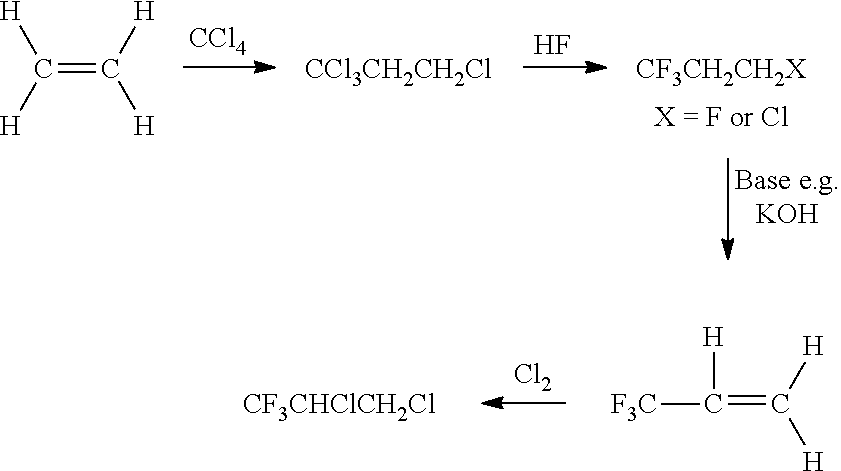Process for Preparing R-1234yf By Base Mediated Dehydrohalogenation
a technology of dehydrohalogenation and base mediated dehydrohalogenation, which is applied in the preparation of organic compounds, carbonyl compounds, organic chemistry, etc., can solve the problems of toxic and/or expensive reagent handling, low yield, and inability to meet the requirements of the process
- Summary
- Abstract
- Description
- Claims
- Application Information
AI Technical Summary
Problems solved by technology
Method used
Image
Examples
examples 1-7
[0079]Solvent (10 g), alkali metal hydroxide (10 g) and (where used) catalyst (0.25 g) were charged to a 50-ml Hastalloy C reactor vessel equipped with temperature and pressure indicators and a cruciform stirrer. The vessel was sealed and pressure tested with nitrogen. A feed of either CF3CFHCF2H (HFC-236ea) or CF3CF2CH2F (HFC-236cb) (10-15 g, 97%) was then charged from a small feed bomb and the contents heated at 150° C. for the times specified in Table 1 with stirring. At the end of the experiment, the volatile products and any unconverted feeds were recovered by distillation for analysis by GC-MS. The results are illustrated in Table 1.
TABLE 1236ea / cb → 1225yeHFC-Z-E-122Expt236Cata-TimeConver-1225ye1225ye5zcNoisomerSolventBaselyst(hrs)sion (%)(%)(%)(%)1eawaterKOH—3.557.846.75.702eawaterNaOH—4.520.814.91.703eawaterKOH—1921.415.91.304eawaterKOH18-2.557.549.34.10crown-65eaPEG300KOH—350.4412.806cbwaterKOH—191.30.520N / A7cbwaterKOH—221.50.420N / A
examples 8-22
[0080]Base, solvent and catalyst, where used, were charged to the reaction vessel. The reaction vessel was sealed, pressure tested and evacuated. A pre-weighed amount of the organic feed was then transferred to the reactor. The reactor and its contents were then weighed before being heated from room temperature to 150° C. over 45 minutes with stirring. This temperature was maintained with stirring at 1500 rpm for 6 hours. After this period the reactor and its contents were cooled to 10° C. over 30 minutes and the rate of stirring reduced to 200 rpm.
[0081]The next day the reactor and its contents were re-weighed and then the reactor re-heated to 50° C. ready for product recovery. The products and any un-reacted starting materials were recovered by distillation into a pre-weighed and evacuated chilled (−78° C.) sample bomb. The weight of the recovered products was determined before they were analyzed by GC-MS. The GC-MS was calibrated using feed and product samples where available. Un...
PUM
| Property | Measurement | Unit |
|---|---|---|
| temperature | aaaaa | aaaaa |
| temperature | aaaaa | aaaaa |
| temperature | aaaaa | aaaaa |
Abstract
Description
Claims
Application Information
 Login to View More
Login to View More - R&D
- Intellectual Property
- Life Sciences
- Materials
- Tech Scout
- Unparalleled Data Quality
- Higher Quality Content
- 60% Fewer Hallucinations
Browse by: Latest US Patents, China's latest patents, Technical Efficacy Thesaurus, Application Domain, Technology Topic, Popular Technical Reports.
© 2025 PatSnap. All rights reserved.Legal|Privacy policy|Modern Slavery Act Transparency Statement|Sitemap|About US| Contact US: help@patsnap.com



